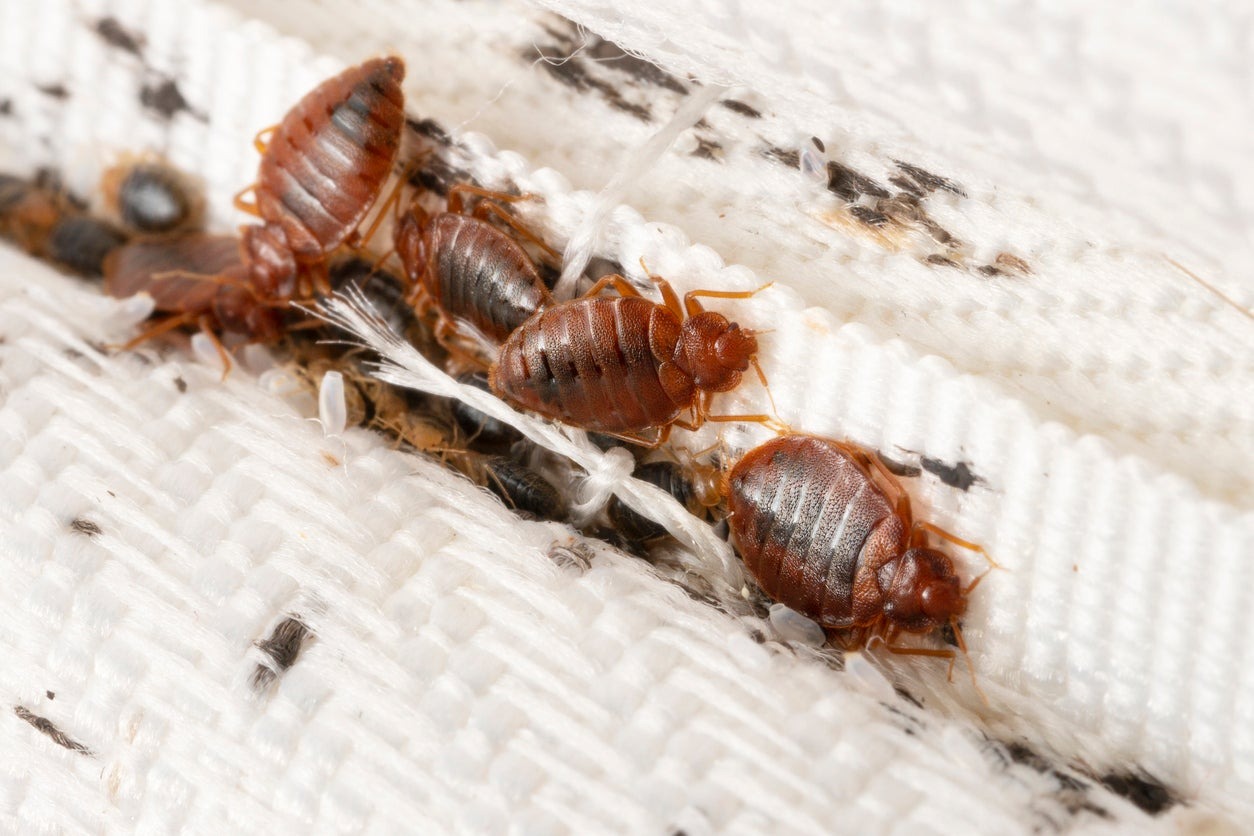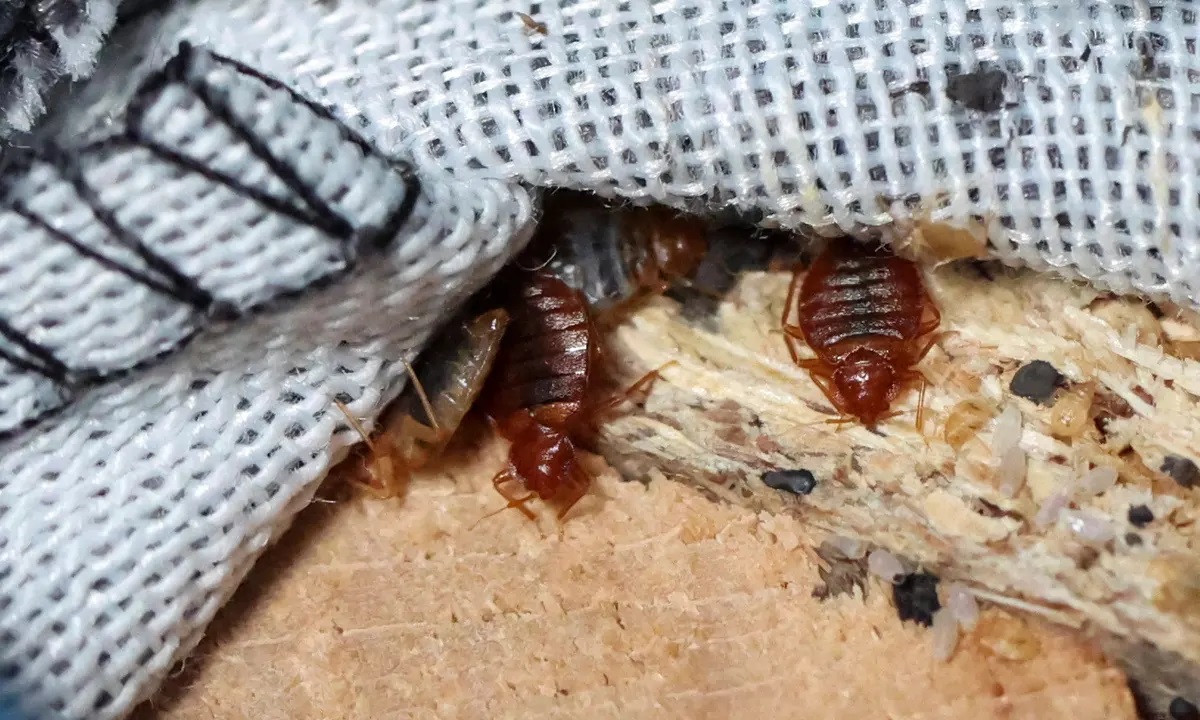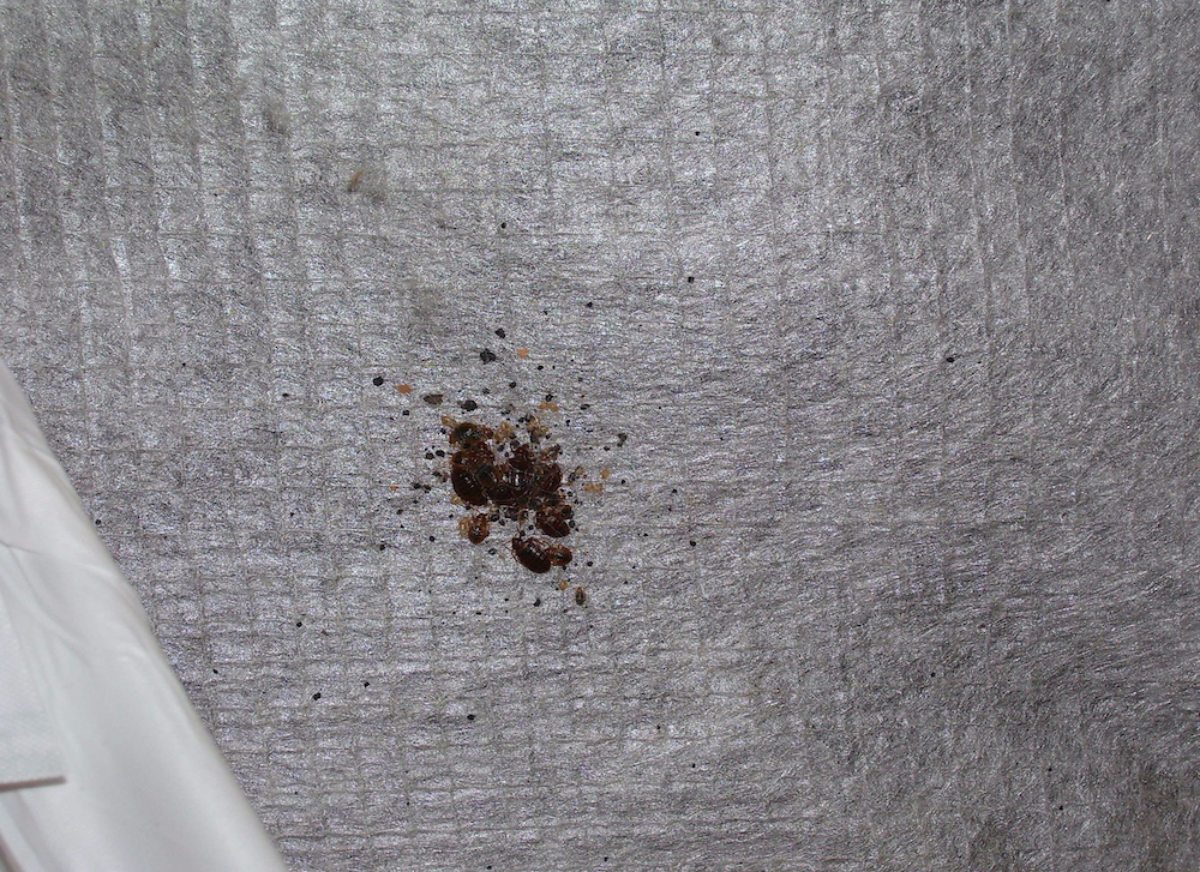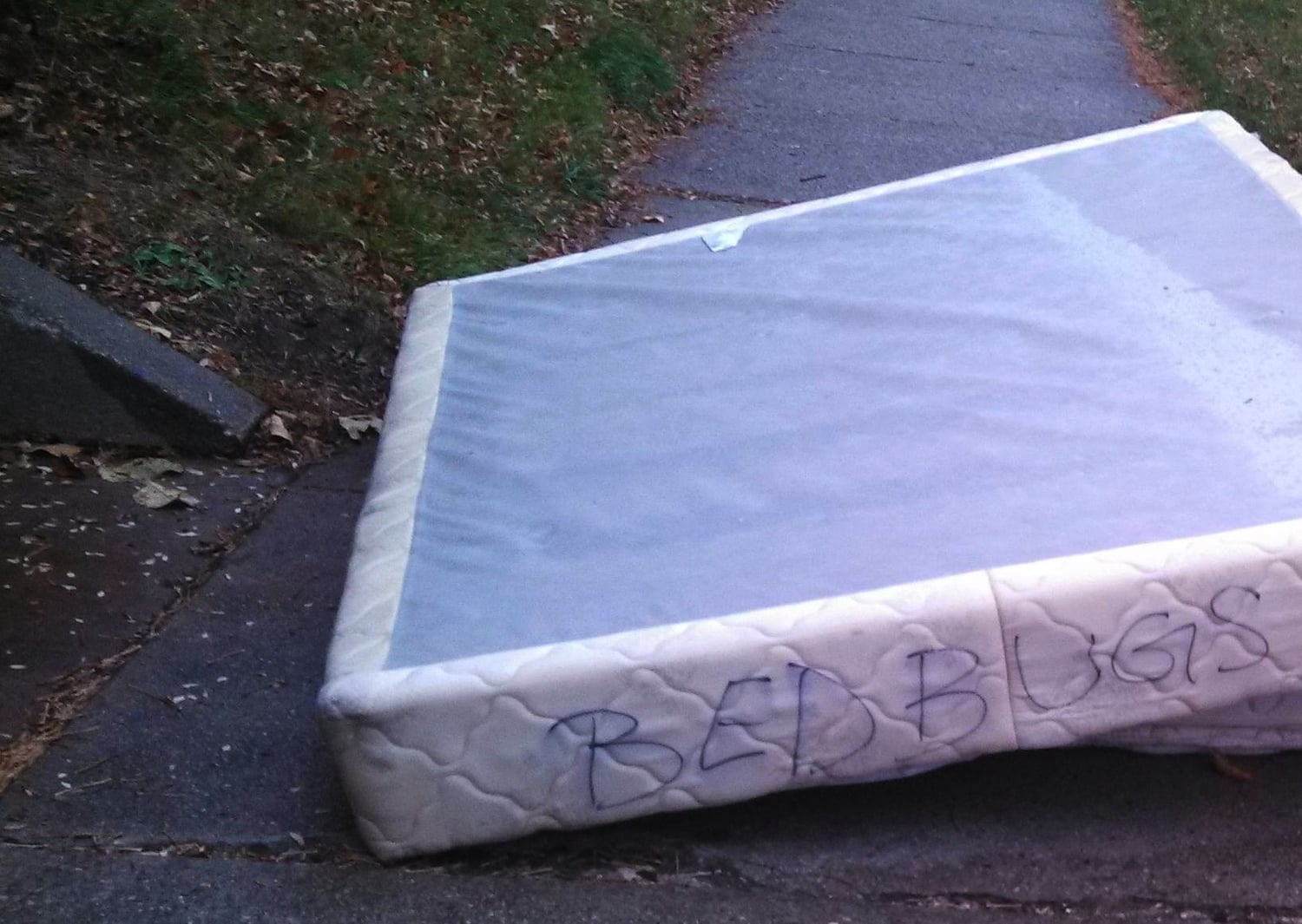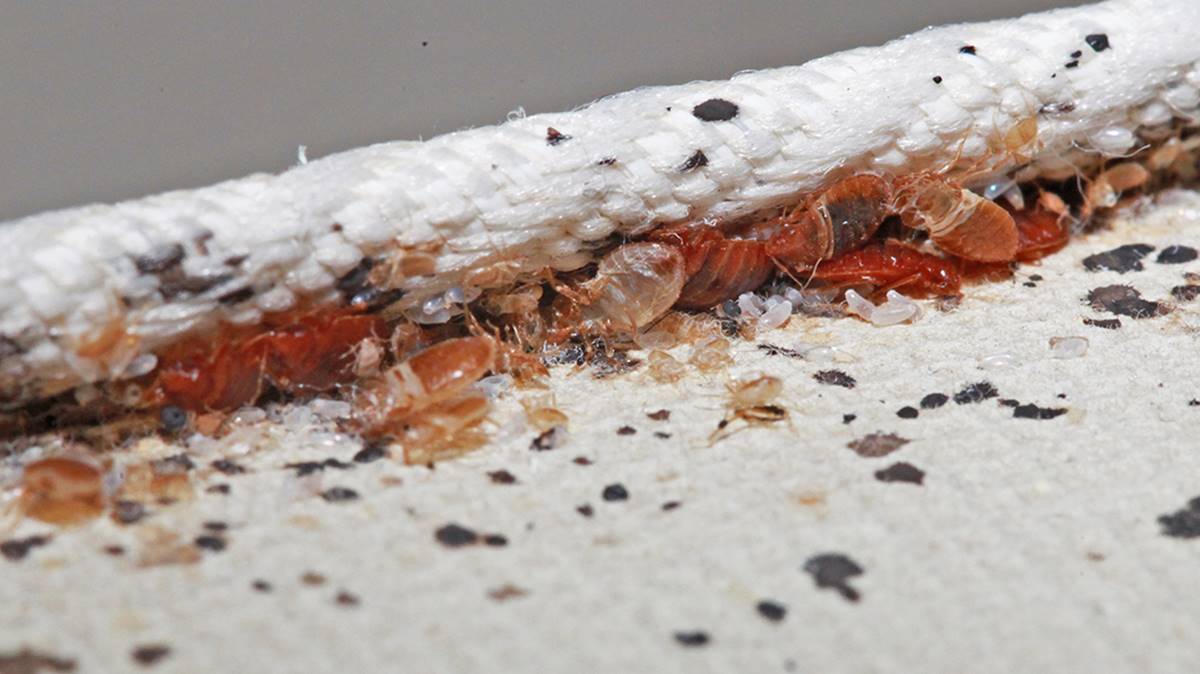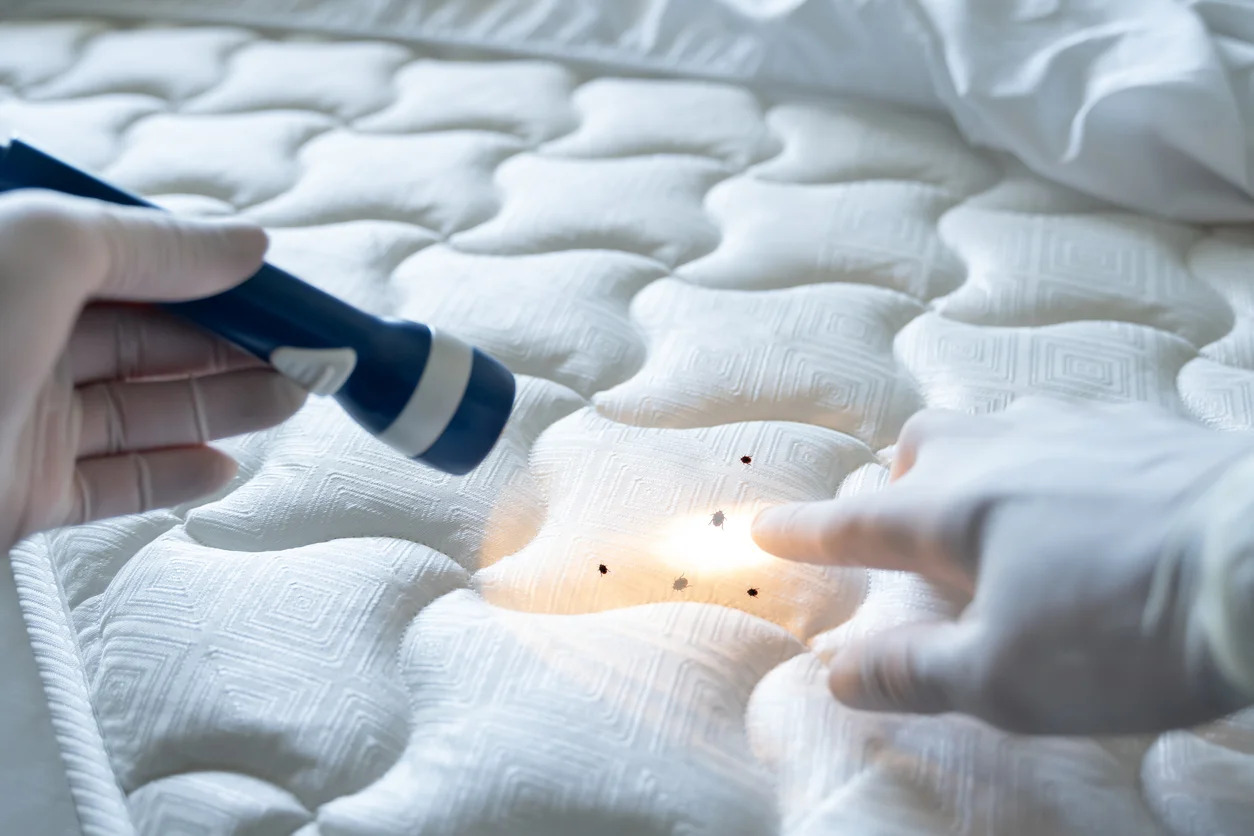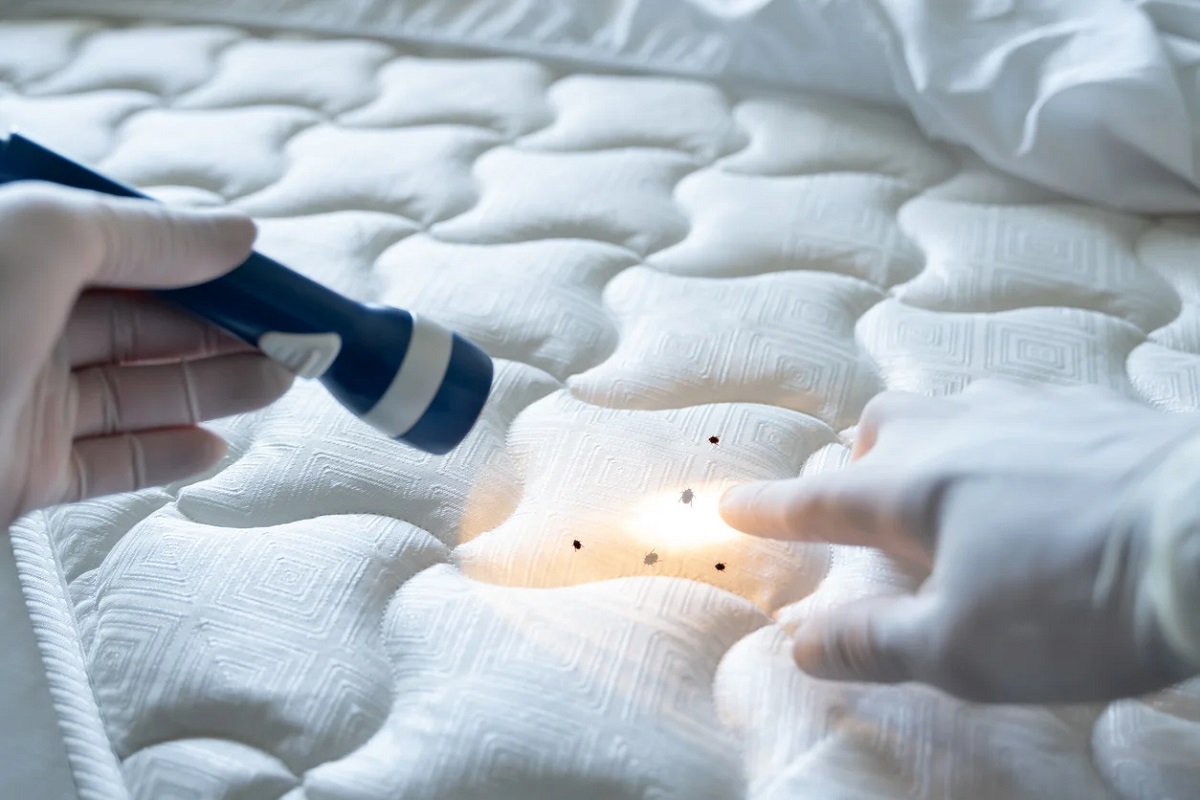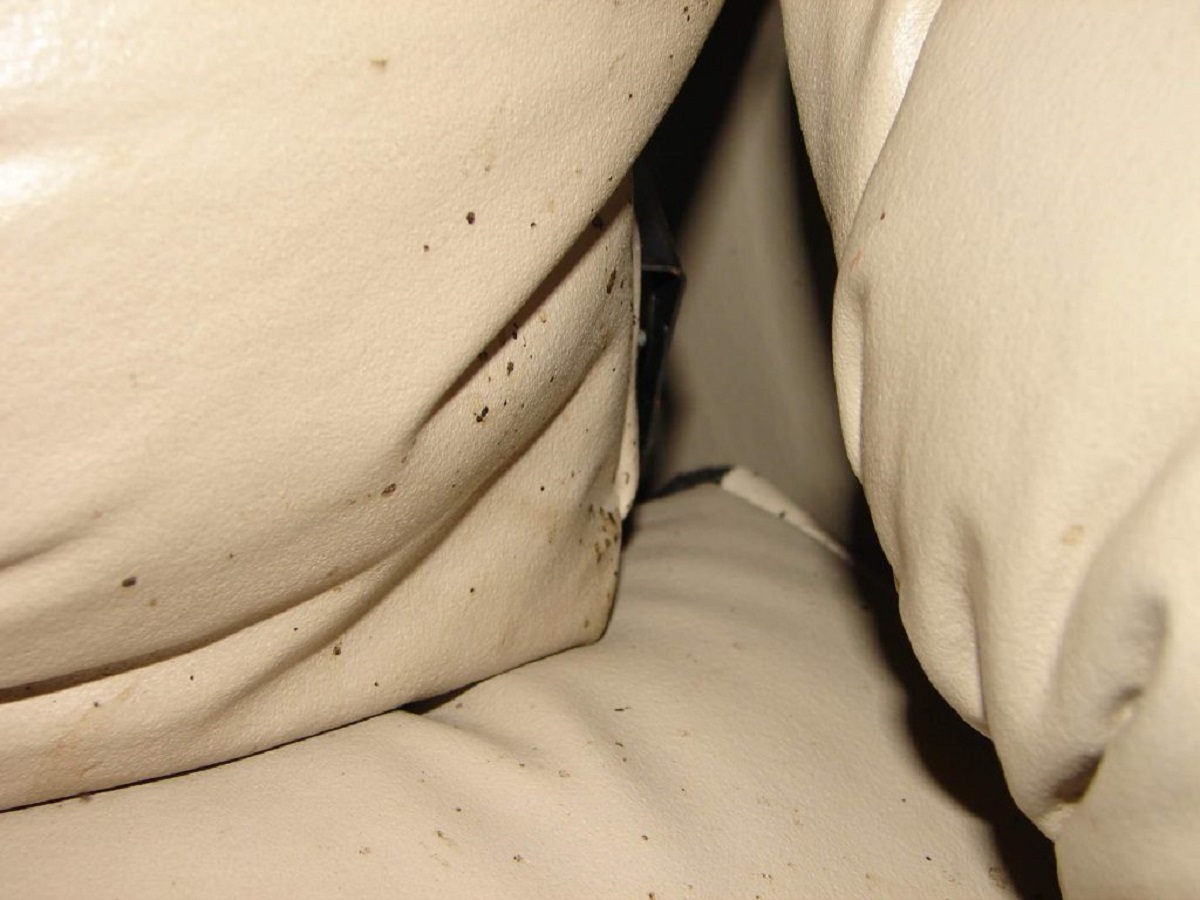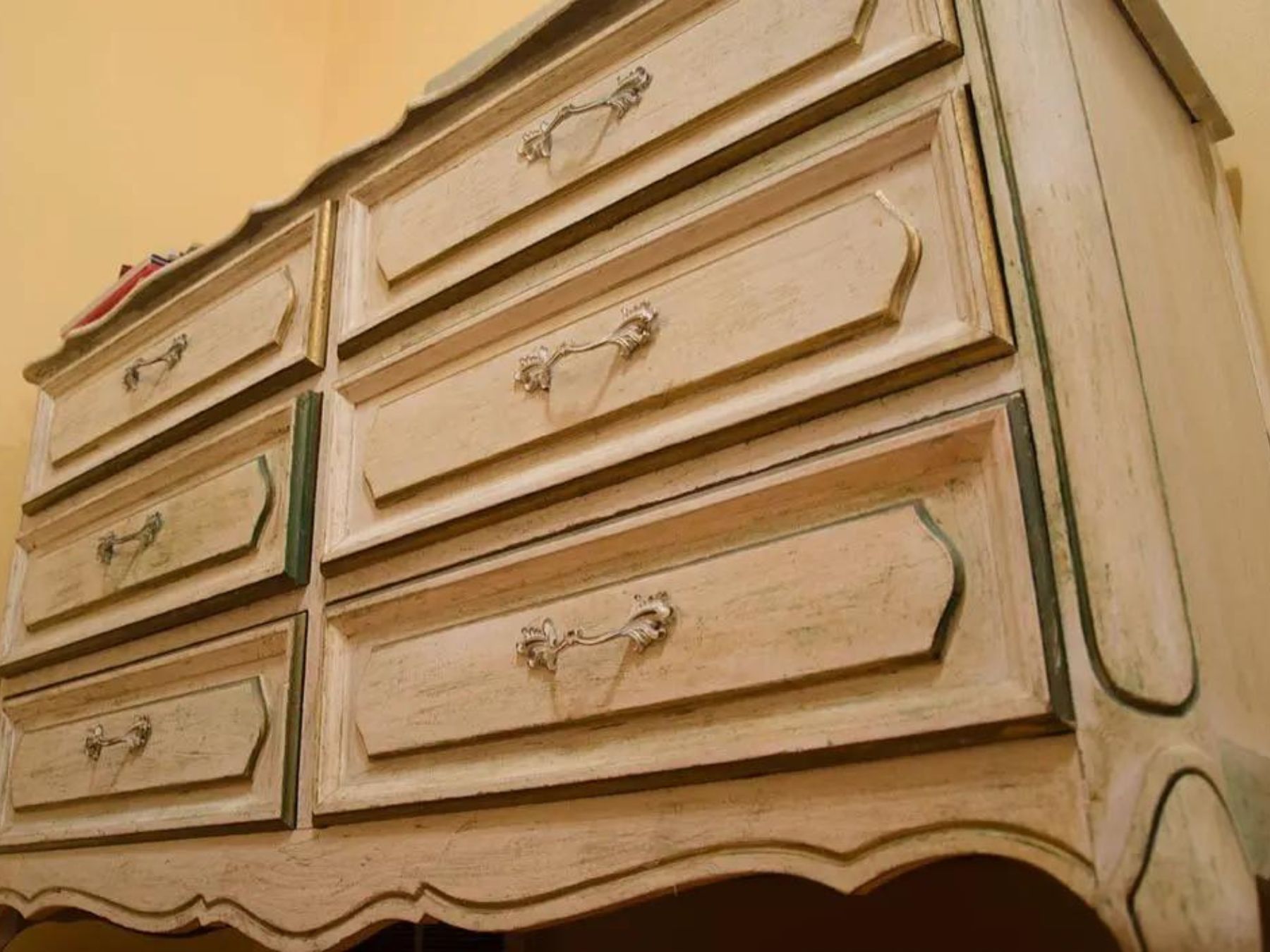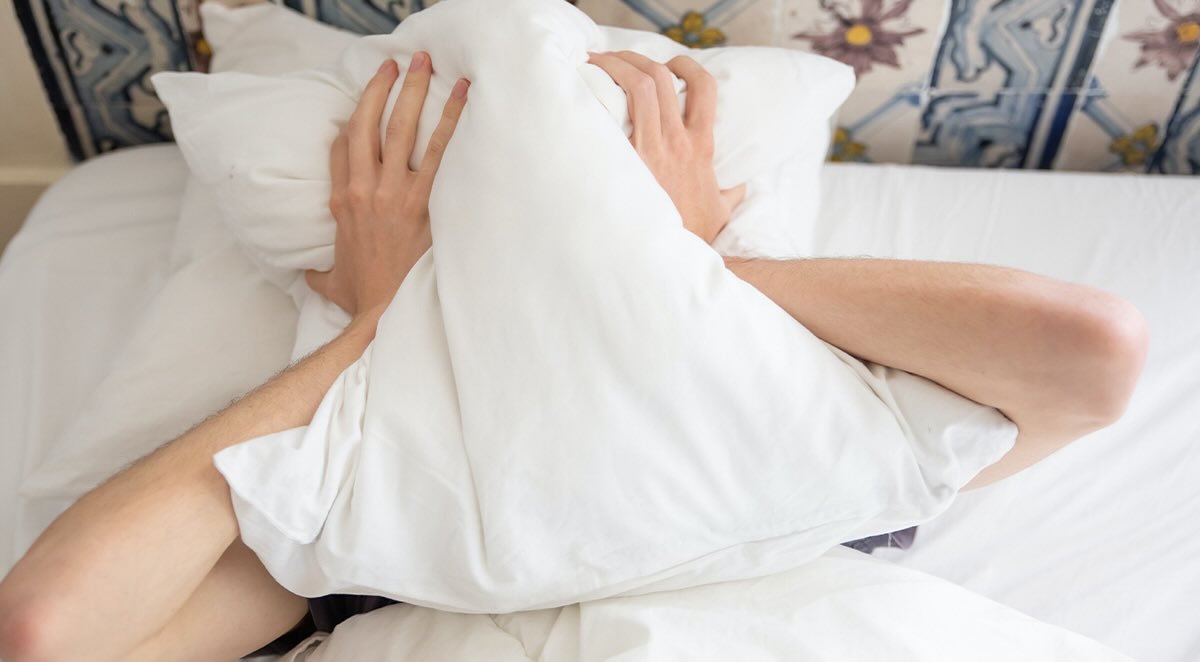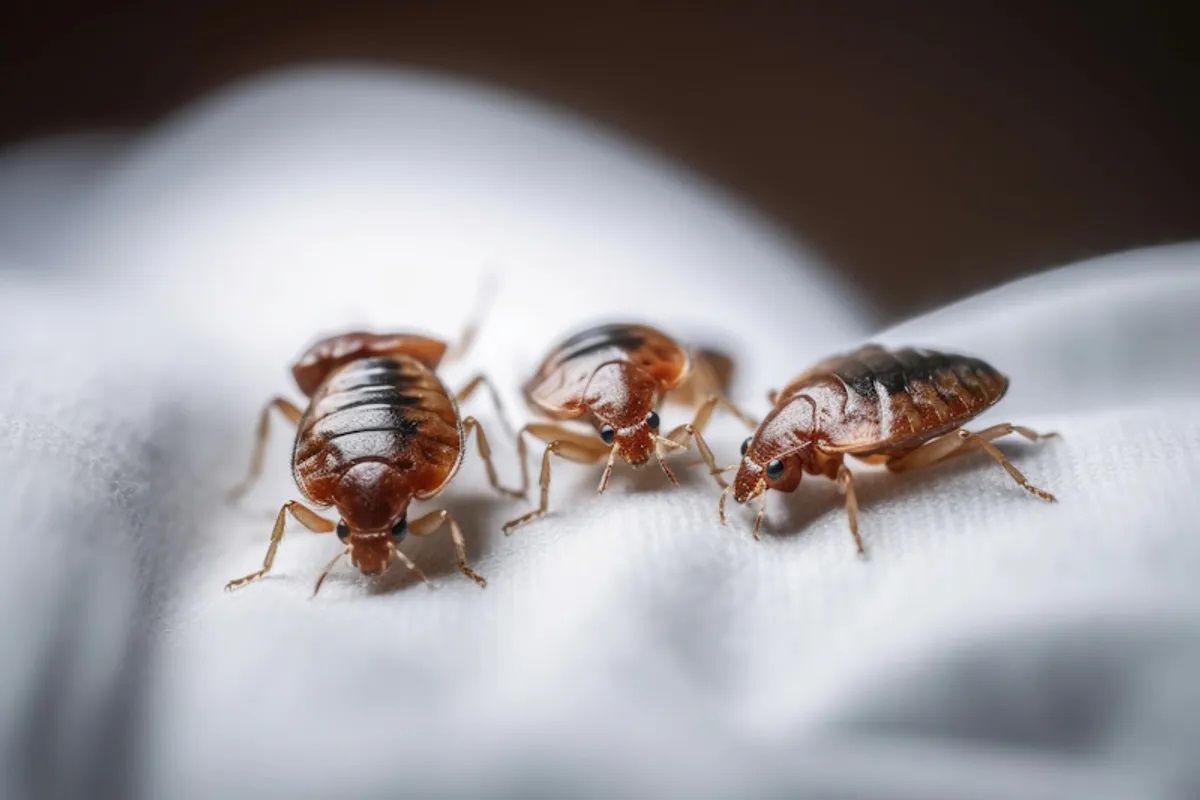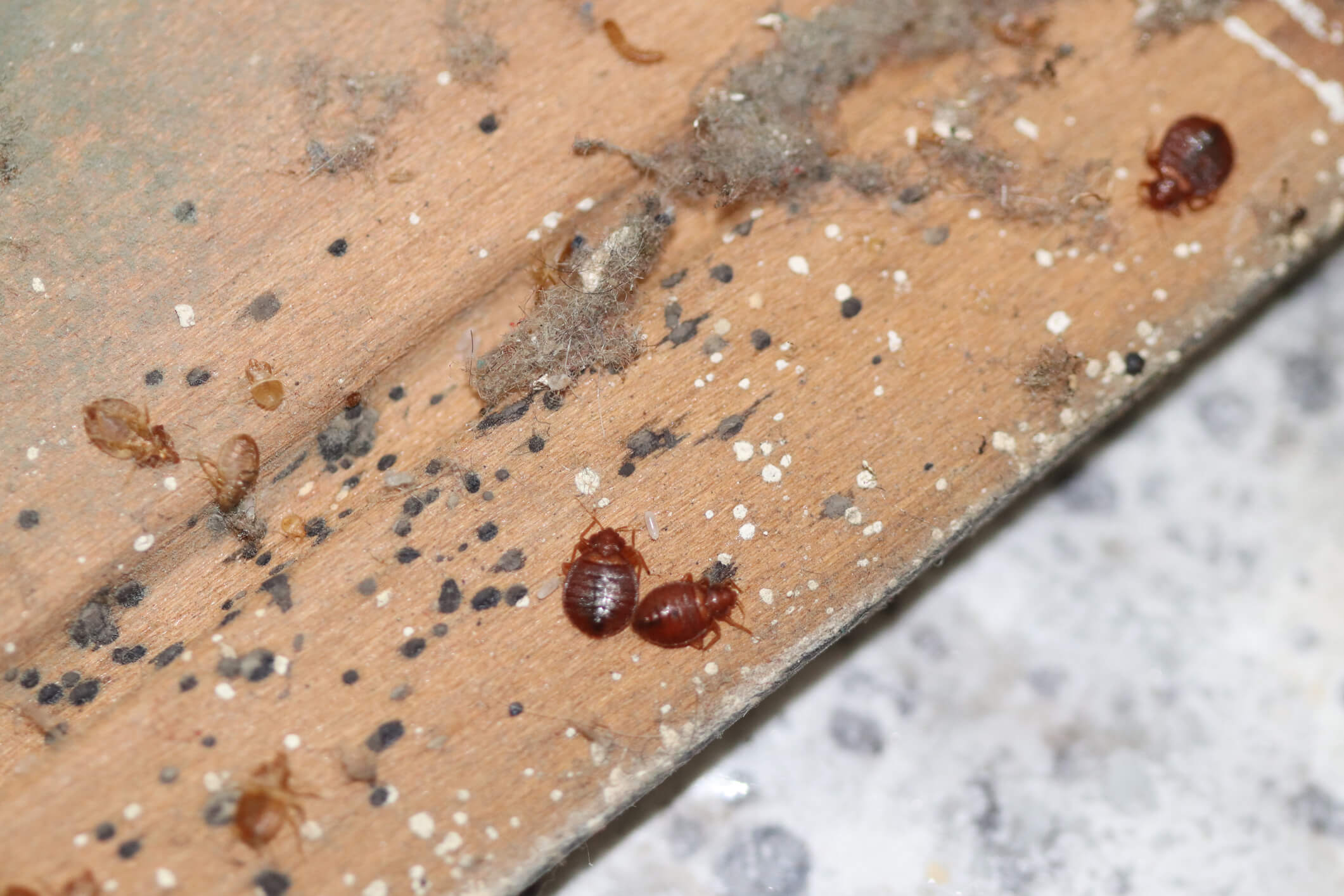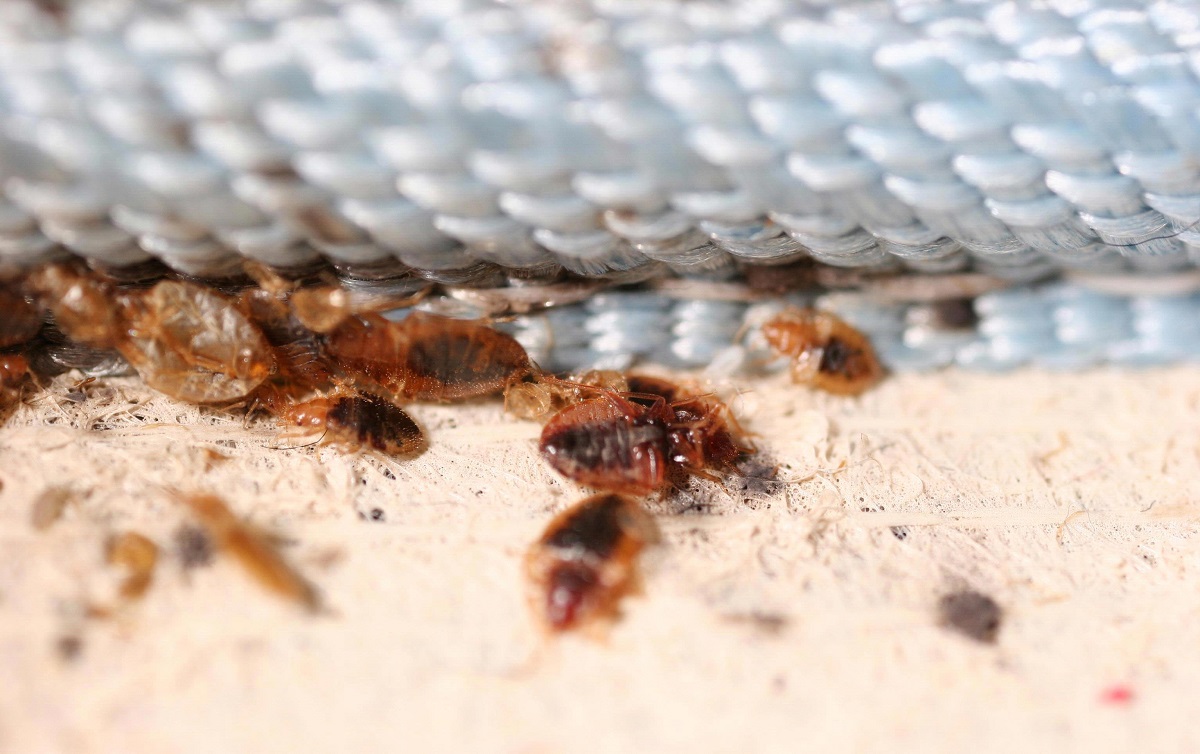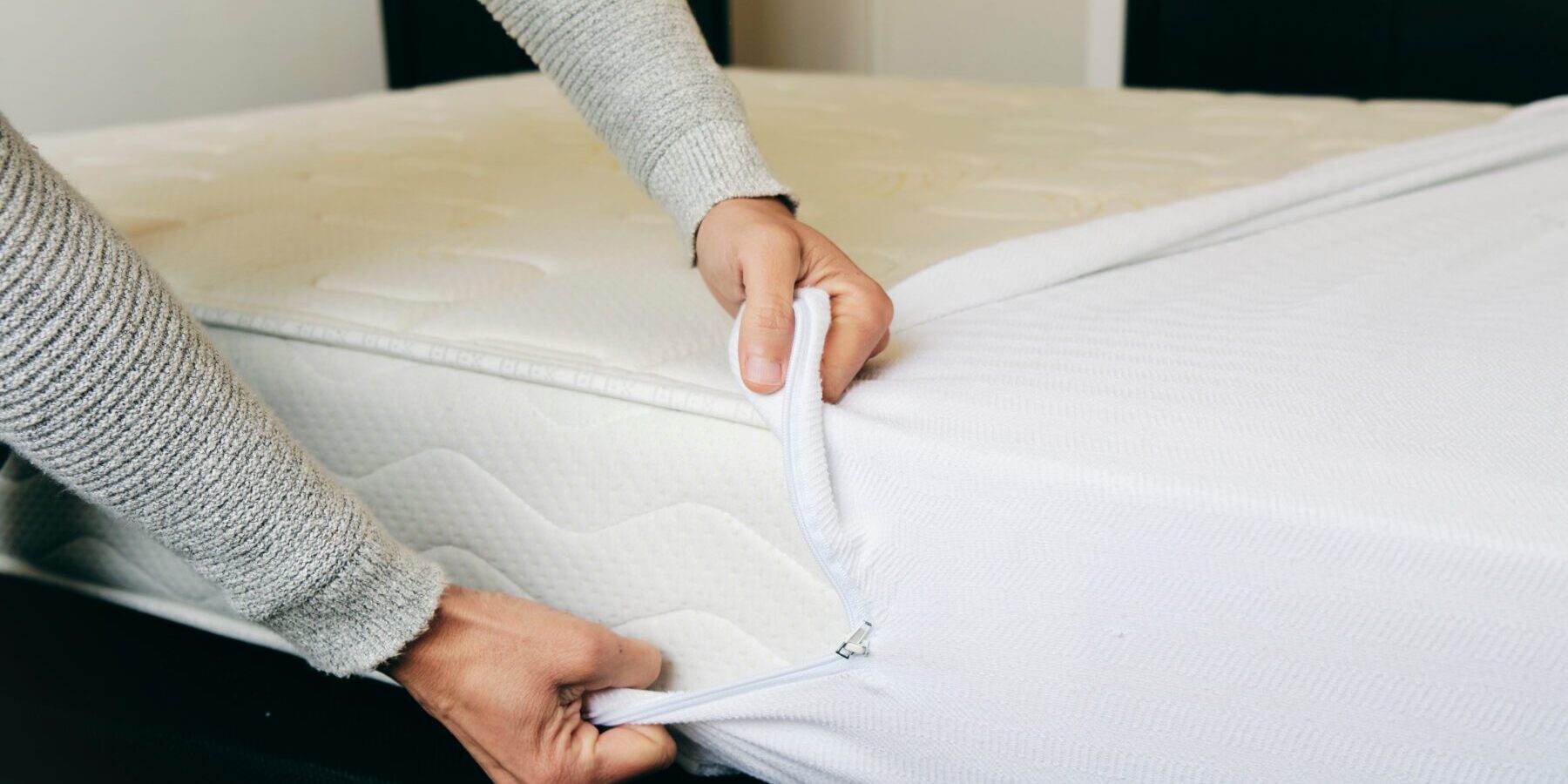Home>Furniture>Bedroom Furniture>How Do Bed Bugs Get Inside A Mattress
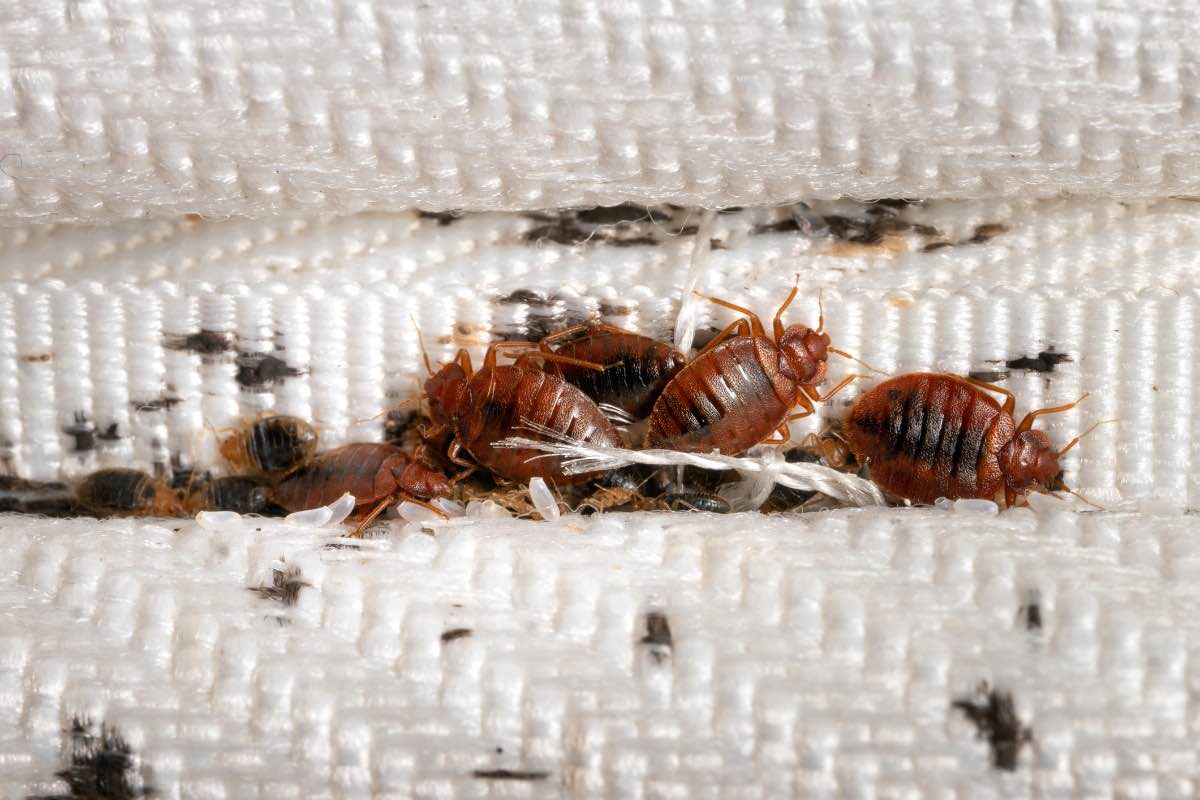

Bedroom Furniture
How Do Bed Bugs Get Inside A Mattress
Modified: September 1, 2024
Learn how bed bugs can easily infiltrate your bedroom furniture, particularly your mattress, and pose a threat to your comfort and well-being.
(Many of the links in this article redirect to a specific reviewed product. Your purchase of these products through affiliate links helps to generate commission for Storables.com, at no extra cost. Learn more)
Introduction
When it comes to bedroom furniture, there is one unwelcome guest that can cause a nightmare for anyone: bed bugs. These tiny, blood-sucking pests have become a widespread problem in recent years, infesting mattresses and causing sleepless nights for many people. Understanding how bed bugs get inside a mattress is crucial in preventing and managing an infestation.
Bed bugs are small, wingless insects that feed on the blood of humans and animals. They are expert hitchhikers and can easily find their way into your home without you even knowing it. Once they make their way inside a mattress, they can multiply quickly and become a major nuisance.
In this article, we will explore the different ways in which bed bugs enter a mattress and provide some tips on how to prevent their invasion. So, let’s dive in and arm ourselves with the knowledge to keep these creepy crawlers at bay.
Key Takeaways:
- Protect your mattress from bed bugs by inspecting second-hand furniture, sealing cracks, and using mattress encasements. Stay vigilant while traveling and consult a professional if needed.
- Prevent bed bugs from infesting your mattress with regular vacuuming, washing bedding in hot water, and minimizing clutter. Be cautious while traveling and consider using bed bug detectors for early detection.
Read more: How To Get Rid Of Bed Bugs On A Mattress
Understanding Bed Bugs
Before we delve into how bed bugs enter a mattress, let’s first understand a little more about these pesky critters. Bed bugs belong to the Cimicidae family and are scientifically known as Cimex lectularius. They are small, oval-shaped insects that are typically reddish-brown in color.
Contrary to popular belief, bed bugs are not indicative of poor hygiene or cleanliness. They are opportunistic creatures that can infest any home or hotel, regardless of its level of cleanliness. This is because bed bugs are primarily attracted to warmth and carbon dioxide, which are emitted by sleeping humans.
Bed bugs are primarily nocturnal, preferring to come out at night to feed. They can survive without feeding for several months, making it even more challenging to eradicate them once they infest a mattress or surrounding furniture.
Although bed bug bites can cause itchiness, redness, and discomfort, they are generally not known to transmit diseases. However, the psychological impact of a bed bug infestation can be significant, leading to sleep deprivation, anxiety, and stress.
These pests can be introduced to your home through various means, and understanding their entry points is crucial in preventing and dealing with an infestation.
Ways Bed Bugs Enter a Mattress
Bed bugs can find their way into a mattress through several means. Understanding these entry points can help you take the necessary precautions to prevent an infestation. Here are the most common ways bed bugs enter a mattress:
- Hitchhiking: Bed bugs are excellent hitchhikers and can easily latch onto your clothing, luggage, or even pets. If you come into contact with bed bugs in an infested area, they can hitch a ride back to your home and end up infesting your mattress.
- Infested Furniture: Second-hand furniture, particularly mattresses, can be a major source of bed bug infestations. If you purchase a used mattress without thoroughly inspecting it, you run the risk of bringing bed bugs into your home. Similarly, if you have infested furniture in your home, bed bugs can easily spread to your mattress.
- Cracks and Crevices: Bed bugs are flat and can easily squeeze into tiny cracks and crevices. If there are gaps or openings in your mattress, bed bugs can find their way inside and establish a breeding ground.
- Traveling: If you stay in infested hotels or accommodations during your travels, bed bugs can hide in your luggage and come back home with you. They can then infest your mattress and other areas of your home.
It is important to note that bed bugs are not exclusive to mattresses. They can also be found in box springs, bed frames, headboards, and even behind wallpaper or electrical outlets. Taking preventative measures to protect your mattress can go a long way in preventing an infestation.
In the next section, we will explore some prevention tips to safeguard your mattress from bed bugs.
Hitchhiking
Hitchhiking is one of the most common ways that bed bugs enter a mattress. These resilient pests can easily hitch a ride on your clothing, luggage, or other personal belongings and find their way into your home.
Bed bugs are experts at hiding and will often seek out small crevices or folds in fabric to conceal themselves during transport. This makes it easy for them to go undetected until they infest your mattress.
There are several scenarios where you may unknowingly pick up bed bugs and transport them to your home:
- Hotels and Accommodations: Bed bugs are frequently found in hotels and other accommodations, particularly in areas with high turnover rates. When you stay in an infested room, bed bugs can crawl onto your luggage or clothing.
- Public Transportation: Public transportation, such as buses, trains, and airplanes, can also be sources of bed bug hitchhiking. Cushioned seats and upholstery serve as hiding spots for these pests, allowing them to easily latch onto your clothing or bags.
- Visiting Infested Places: If you visit friends or family members who have a bed bug infestation, you could unknowingly bring bed bugs back home with you. The pests can cling onto your belongings or clothing while you are in their infested environment.
- Used Furniture: Purchasing second-hand furniture is another potential way to introduce bed bugs to your home. If the furniture is infested, the bed bugs can hitch a ride on the fabric or wood and infest your mattress upon arrival.
To minimize the risk of picking up bed bugs through hitchhiking, it is essential to be vigilant and take preventative measures:
- Inspect your accommodations when staying in a hotel or other lodging. Check the mattress seams, headboard, and furniture for any signs of bed bugs.
- When using public transportation, avoid placing your belongings on upholstered seats if possible. Keep your bags on your lap or in a designated storage area.
- If you are visiting an infested place, take extra precautions by avoiding direct contact with furniture or bedding. Keep your belongings in sealed plastic bags until you can thoroughly inspect them at home.
- If you are purchasing used furniture, thoroughly inspect it for any signs of bed bugs before bringing it into your home.
By being cautious and implementing these preventative measures, you can minimize the risk of bed bugs hitchhiking their way into your mattress and causing an infestation.
Infested Furniture
Infested furniture, particularly mattresses, can be a significant source of bed bug infestations. When you bring used furniture into your home without proper inspection, you run the risk of introducing bed bugs to your mattress.
It’s important to understand that bed bugs are not only found in dirty or unsanitary environments. They can infest any furniture, regardless of its appearance or cleanliness. Bed bugs are opportunistic pests that can thrive in both luxurious hotels and modest homes.
Here’s how infested furniture can lead to a bed bug infestation in your mattress:
- Second-Hand Mattresses: If you purchase a used mattress without thoroughly inspecting it, you may unknowingly bring bed bugs into your home. Bed bugs can hide in the seams, crevices, and tufts of the mattress, making them challenging to detect.
- Infested Upholstered Furniture: Sofas, recliners, and other upholstered furniture can also harbor bed bugs. When these pests infest such furniture, they can easily transfer to your mattress through close proximity or direct contact.
- Freely Moving Between Furniture: Bed bugs are excellent climbers and can move between furniture pieces in search of a blood meal. If your infested couch is near your bed, for example, bed bugs can crawl onto your mattress during the night and begin feeding.
- Moving or Relocating: If you’ve recently moved or relocated and used a moving truck or storage unit, there’s a chance that the furniture you transported or stored may have been infested with bed bugs. These pests can hide in the seams or cracks of furniture items and make their way into your mattress once unpacked.
To avoid bringing home bed bugs through infested furniture, it’s crucial to take precautionary measures:
- Inspect Used Furniture: Before bringing any used furniture, especially mattresses, into your home, carefully inspect it for signs of bed bugs. Look for dark stains (indicative of fecal matter), shed skins, or live bugs crawling on the furniture.
- Consider Professional Inspection: If you’re uncertain or concerned about the possibility of bed bugs in used furniture, consider hiring a professional pest control company to conduct a thorough inspection before making a purchase.
- Heat or Treat the Furniture: If you decide to bring used furniture into your home, it’s advisable to treat it with heat or other appropriate bed bug treatments to eliminate any potential infestation.
- Use Protective Covers: Consider using bed bug-proof encasements for your mattress and box spring to prevent bed bugs from infesting your sleeping area. These covers create a barrier that bed bugs cannot penetrate.
By being diligent in your inspection and taking proactive measures, you can significantly reduce the risk of bed bugs entering your mattress through infested furniture. Stay vigilant and protect your sleep sanctuary from these unwelcome pests.
To prevent bed bugs from getting inside a mattress, use a mattress encasement that is specifically designed to keep bed bugs out. This will create a barrier and protect your mattress from infestation.
Read more: How Do I Get Bed Bugs
Cracks and Crevices
Bed bugs are clever and resourceful pests that can squeeze into the tiniest of spaces. Cracks and crevices in your mattress provide the perfect hiding spots for these pesky insects. If your mattress has any gaps or openings, it becomes vulnerable to a bed bug infestation.
Here’s how bed bugs can enter your mattress through cracks and crevices:
- Mattress Seams: Bed bugs are masters at hiding in the seams of your mattress. These seams provide a hidden pathway for them to enter and infest your mattress. They can easily maneuver through the stitching, making it crucial to inspect the seams regularly.
- Box Spring: Bed bugs can also find their way into your mattress through the box spring. If there are any cracks or gaps in the box spring, these pests can crawl up and make their way inside the mattress.
- Headboard and Bed Frame: If your headboard or bed frame has cracks or crevices, bed bugs can use these as entry points. They can crawl from the headboard or frame onto the mattress and infest it.
- Torn or Damaged Fabric: Any tears or damaged fabric on your mattress can provide an avenue for bed bugs to enter. These pests can slip through the smallest of openings, so it’s crucial to repair any tears promptly.
To prevent bed bugs from entering your mattress through cracks and crevices, follow these prevention tips:
- Regularly Inspect Your Mattress: Check your mattress, box spring, headboard, and bed frame for any cracks, crevices, or visible signs of bed bugs. Be thorough in your inspection, paying close attention to seams and any damaged areas.
- Seal Cracks and Crevices: Use a sealant, such as caulk or silicone, to seal any cracks or gaps in your mattress, box spring, headboard, or bed frame. This will prevent bed bugs from finding their way in or out.
- Repair Damaged Fabric: If you notice any tears or damaged fabric on your mattress, promptly repair or replace it. Bed bugs can easily enter through these openings, so it’s important to keep your mattress in good condition.
- Use Mattress Encasements: Consider using bed bug-proof encasements for your mattress and box spring. These covers will not only protect your mattress from bed bugs but also help seal any existing infestations, preventing them from spreading further.
By regularly inspecting your mattress and taking proactive measures to seal any cracks or crevices, you can create a barrier that prevents bed bugs from infesting your sleeping area. Stay vigilant and keep these unwanted pests at bay.
Traveling
Traveling can be an exciting and refreshing experience, but it also comes with the risk of encountering bed bugs. These unwelcome pests can easily hitch a ride on your luggage and find their way into your mattress once you return home.
Here’s how bed bugs can enter your mattress through traveling:
- Hotel Stays: Bed bugs are known to infest hotels, especially in areas with high tourist traffic. When you stay in an infested hotel room, bed bugs can crawl onto your belongings, including your luggage, clothing, and personal items.
- Shared Accommodations: If you stay in hostels, dormitories, or other shared accommodations, the risk of encountering bed bugs increases. These pests can easily transfer from one person’s belongings to another, including bedding and mattresses.
- Public Transportation: Public transportation, such as buses, trains, and airplanes, can also be sources of bed bug infestations. These pests are skilled hitchhikers and can crawl onto your bags or clothing while you are in close proximity to infested areas or seating.
- Other Travelers: It’s important to remember that bed bugs can infest any place where people gather, such as airports, train stations, and even friends’ or family members’ homes. If you come into contact with bed bugs in these environments, they can easily find their way into your luggage and ultimately infest your mattress.
To minimize the risk of bringing bed bugs home with you while traveling, consider the following prevention tips:
- Inspect Your Accommodations: Upon arrival, thoroughly inspect your hotel room or vacation rental for signs of bed bugs. Look closely at the mattress seams, headboards, and bedside furniture. If you see any indications of bed bugs, request a room change or find alternative accommodations.
- Use Luggage Rack or Hard Surface: Avoid placing your luggage on the bed or carpeted areas. Instead, use a luggage rack or a hard surface to keep your bags elevated and away from the floor, where bed bugs may be hiding.
- Keep Belongings Sealed: Use sealed plastic bags or packing cubes to keep your clothing and personal items organized inside your luggage. This will provide an extra layer of protection against bed bug infestations.
- Inspect Your Luggage Before Leaving: Before checking out of your hotel or leaving a shared accommodation, perform a thorough inspection of your luggage to ensure there are no signs of bed bugs. This way, you can address any potential issues before returning home.
- Wash and Dry Clothes on High Heat: Once you return home, immediately wash your travel clothes in hot water and dry them on high heat. This will help eliminate any bed bugs that may have hitched a ride on your clothing.
By being vigilant, inspecting your accommodations, and taking preventative measures, you can minimize the risk of bed bugs infesting your mattress while traveling. Stay proactive and ensure your travels remain bug-free!
Prevention Tips
Preventing bed bugs from entering your mattress is crucial in maintaining a pest-free sleeping environment. By implementing a few simple prevention tips, you can significantly reduce the risk of a bed bug infestation. Here are some effective preventive measures:
- Mattress Encasements: Use bed bug-proof encasements for your mattress and box spring. These covers create a protective barrier that bed bugs cannot penetrate, preventing them from infesting your mattress.
- Vacuum Regularly: Vacuum your mattress, box spring, and surrounding area regularly to remove any potential bed bugs or eggs. Pay close attention to seams, crevices, and cracks where bed bugs may hide.
- Inspect Second-Hand Furniture: If you plan to bring in used furniture, especially mattresses, thoroughly inspect them for signs of bed bugs. Look for dark stains, shed skins, or live bugs before bringing them into your home.
- Be Cautious While Traveling: When staying in hotels or shared accommodations, inspect the room for signs of bed bugs. Keep your luggage elevated and away from the floor, and use sealed plastic bags to store your belongings.
- Minimize Clutter: Reduce clutter in your bedroom as bed bugs can hide in cluttered areas. Keep your living space well-organized and free from unnecessary items.
- Seal Cracks and Crevices: Use sealant to fill any cracks or crevices in your mattress, box spring, headboard, and bed frame. This helps prevent bed bugs from finding hiding spots and entering your mattress.
- Inspect and Clean Bedding: Regularly inspect your bedding for any signs of bed bugs. Wash your sheets, pillowcases, and blankets in hot water regularly to kill any hidden bed bugs or eggs.
- Use Bed Bug Detectors: Consider using bed bug detectors or traps near your mattress and bed frame. These devices can help monitor and detect the presence of bed bugs early on.
- Be Cautious with Shared Laundry Facilities: If you use a shared laundry facility, be mindful of the potential transfer of bed bugs. Inspect the machines before using them and avoid placing your items on any surfaces in the facility.
- Consult a Professional: If you suspect a bed bug infestation or want extra reassurance, consult a professional pest control company. They can conduct inspections, provide treatment options, and offer expert advice on preventing bed bugs.
By following these prevention tips, you can significantly reduce the risk of bed bugs invading your mattress and infesting your sleeping area. Remember, early detection and proactive measures are key in keeping these unwelcome pests at bay.
Conclusion
Bed bugs can be a nightmare for anyone, especially when they infest your mattress. Understanding how these pests get inside a mattress is essential in preventing and managing an infestation effectively.
In this article, we explored the various ways bed bugs can enter a mattress, including hitchhiking on clothes or luggage, infested furniture, cracks and crevices, and even during travel. We also discussed important prevention tips to help protect your mattress from bed bugs.
Remember, bed bugs are not exclusive to unsanitary environments, and anyone can encounter them. Being vigilant and implementing preventive measures can go a long way in keeping your mattress bed bug-free.
Inspecting second-hand furniture, sealing cracks and crevices, using mattress encasements, and practicing caution while traveling are just a few of the steps you can take to safeguard your mattress from a bed bug infestation. It’s also essential to vacuum regularly, wash bedding in hot water, and minimize clutter in your bedroom.
If you suspect a bed bug infestation or need professional assistance, it’s always a good idea to consult with a pest control expert who can provide guidance, inspections, and treatments.
By staying informed, proactive, and taking preventive measures, you can enjoy sound and peaceful nights knowing that your mattress is protected from the persistent and bothersome bed bugs.
Frequently Asked Questions about How Do Bed Bugs Get Inside A Mattress
Was this page helpful?
At Storables.com, we guarantee accurate and reliable information. Our content, validated by Expert Board Contributors, is crafted following stringent Editorial Policies. We're committed to providing you with well-researched, expert-backed insights for all your informational needs.
